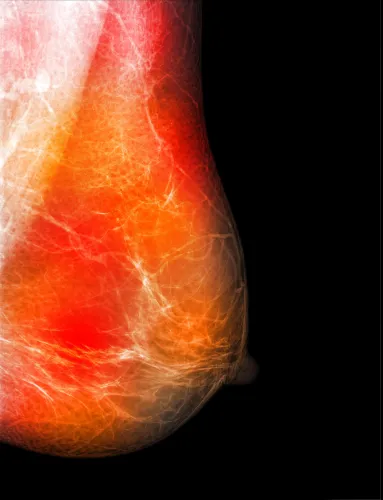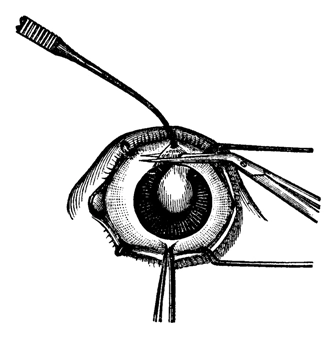Avoid These Pitfalls on 2019 Breast MRI, CAD Combo Coding

Plus, don’t let this semantic error send you into a coding tailspin. By this time of year, you’re almost fully caught up on the influx of new, revised, and deleted CPT® codes that went into effect January 1. As you’re probably aware, one of the most significant changes for independent diagnostic testing facility (IDTF) coders is the brand-new set of breast magnetic resonance imaging (MRI) codes. When it comes to this new set of codes, however, there’s one pitfall that you need to be aware of — and it comes from the most unlikely of sources. For those with access to the AMA’s CPT® Changes 2019: An Insider’s View, there’s a subtle, but important, error that could lead you to miscoding this new set of breast MRI codes. Keep reading to for an analysis and breakdown of this error, and what to do next. See How the Problem Begins and Ends with +0159T As you may already be aware, CPT® deleted code +0159T (Computer-aided detection, including computer algorithm analysis of MRI image data for lesion detection/characterization, pharmacokinetic analysis, with further physician review for interpretation, breast MRI (List separately in addition to code for primary procedure)) in addition to the two existing breast MRI codes. In place of codes 77058 (Magnetic resonance imaging, breast, without and/or with contrast material(s); unilateral) and 77059 (Magnetic resonance imaging, breast, without and/or with contrast material(s); bilateral), CPT® issued four new breast MRI codes, two of which include CAD: As you can see, codes 77048 and 77049 include the use of CAD in the code descriptions. You should report 77046 and 77047 when the provider performs a bilateral or unilateral noncontrast breast MRI. In case you’re wondering, the problem here is twofold. First, before getting into the CPT® 2019 Changes instruction, there’s the dilemma of how a coder should report a unilateral or bilateral noncontrast breast MRI with CAD. This is where questionable verbiage from the CPT® 2019 Changes: An Insider’s View comes in to play. Addressing This Semantic Error, and What to Do Next In its CPT® 2019 Changes: An Insider’s View manual, the AMA offers the following piece of information regarding the four new breast MRI codes: As you can see, this statement, while seemingly benign on the surface, seems to imply that all four of the codes include CAD. However, as the 77046 and 77047 code descriptions show, CPT® does not include CAD in either. The question then shifts toward which piece of information you should prioritize over the other. Until the AMA issues a clarification in its monthly CPT® Assistant newsletter or elsewhere, you should not code based on the statement issued in the CPT® 2019 Changes manual. Use 76376, 76377 Parentheticals as a Reference “Based on the commentary contained in CPT® Changes 2019: An Insider’s View, it appears that the intent was to include CAD with all four breast MRI codes,” explains Stacie L. Buck, RHIA, CCS-P, RCC, RCCIR, CIRCC, AAPC Fellow, President & Senior Consultant at RadRx. “Additionally, the parenthetical notes for codes 76376 [3D rendering with interpretation and reporting of computed tomography, magnetic resonance imaging, ultrasound, or other tomographic modality with image postprocessing under concurrent supervision; not requiring image postprocessing on an independent workstation] and 76377 [… requiring image postprocessing on an independent workstation] state that the codes should not be reported with the new breast MRI codes.” “Since 3D [76376/76377] has always been considered bundled into CAD [+0159T], this is yet another reason it appears that the intent was for CAD to be included with all the new MRI codes. It is unclear at this time how providers being paid under Medicare Physician Fee Schedule [MPFS] should report CAD with a breast MRI performed without contrast [77046/77047]. I would expect to see some clarification from the AMA and/or ACR,” Buck relays. Report This New HCPCS Code in the Meantime Until the AMA elaborates further, you should report codes 77046 and 77047 in the outpatient facility setting with the brand new HCPCS add-on C code +C8937 (Computer-aided detection, including computer algorithm analysis of breast MRI image data for lesion detection/characterization, pharmacokinetic analysis, with further physician review for interpretation (list separately in addition to code for primary procedure) when the radiologist performs CAD. “Additionally, note that Medicare does not recognize 77048 and 77049 under the Outpatient Prospective Payment System (OPPS), explains Sarah L. Goodman, MBA, CHCAF, COC, CCP, FCS, of SLG, Inc. Consulting in Raleigh, North Carolina. “Instead, existing HCPCS C codes C8905 (Magnetic resonance imaging without contrast followed by with contrast, breast; unilateral) and C8908 (Magnetic resonance imaging without contrast followed by with contrast, breast; bilateral) should be reported with new code C8937 as appropriate for use of CAD,” Goodman advises. Refresher: CMS explains that C codes “are only valid for Medicare on claims for hospital outpatient department services and procedures.” “Your HCPCS book states that ‘these are to be used by outpatient hospital facilities billing under OPPS,’” relays Leslie Johnson, CPC, coding and auditing consultant at Oasis Medical and Surgical Wellness Group, LLC, in Glen Rock, New Jersey. If the AMA clarifies that 77046 and 77047 do not, in fact, include CAD, then you will continue to report C8937 with any unilateral or bilateral MRI of the breast without contrast with CAD. If the AMA does include CAD in codes 77046 and 77047, you should contact each payer that reimbursed separately for code C8937 so that the appropriate measures for reimbursement can be taken.




